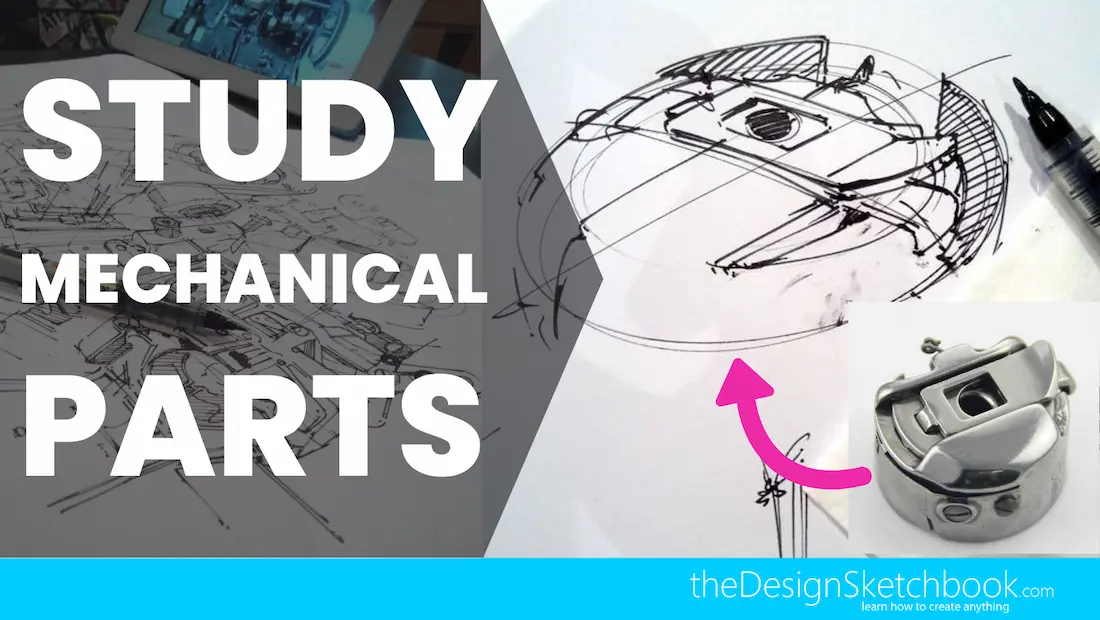
1. How to improve my concept art?
One of the most effective ways to improve your concept art, especially when designing engines or mechanical objects, is to study real mechanical parts closely. Understanding how these components fit, function, and interact makes your designs far more believable and grounded in reality.
2. Why Study Mechanical Parts?
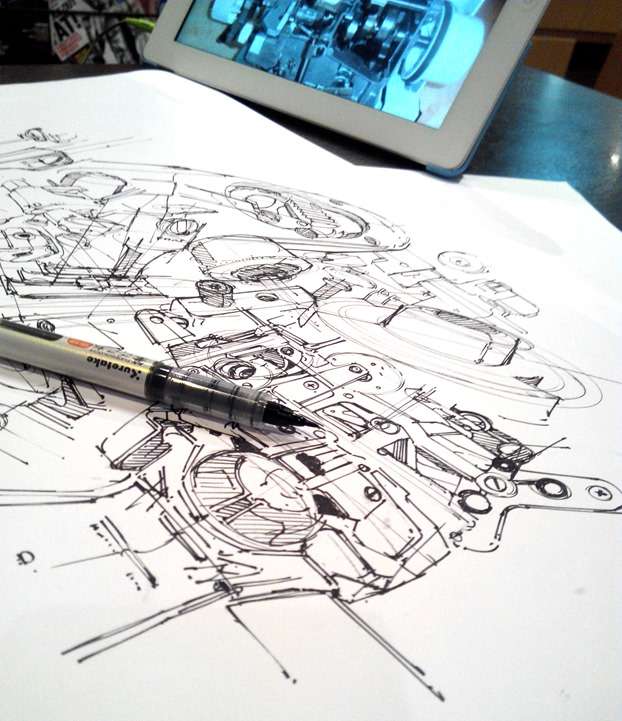
Mechanical designs often appear complex and intimidating, but they are built from basic shapes and functional elements.
By studying parts like gears, pistons, shafts, and joints, you develop an intuitive grasp of mechanical logic.
This knowledge helps you invent realistic and innovative components while maintaining aesthetic appeal.
3. How to Study Effectively
- Gather references: Use online resources, repair manuals, or disassemble old machines to observe parts up close. Take photos or make quick sketches to capture interesting forms.
- Analyze functions: Ask yourself how each part moves or transmits force. Visualize the mechanics to understand the cause-and-effect relationships.
- Focus on relationships: See how parts connect, overlap, or hide behind others. Pay attention to mounting brackets, screws, and supports.
- Practice sketching parts individually: Draw gears, engine blocks, or connectors repeatedly to internalize their shapes and proportions.

When I was a kid, my mom had a sewing machine SINGER at home.
I remember playing with that metallic bobbin case that I already felt modern and elegant.
I guess that’s what attract me today to draw it.
It was so small yet composed of many rounded mechanical pieces, some more a bobbin could perfectly fit in.
Oh, it looks complicated to draw!
Only the upper surface interests me:
By identifying the main shape: a cylinder.
I trace 2 ellipses for the above surface skipping the bottom one on purpose.
TIP: Don’t try to copy by redrawing 100% what you see. Understand the volumes and redraw them.
By doing so, you will gain in sketching lines fluidity.
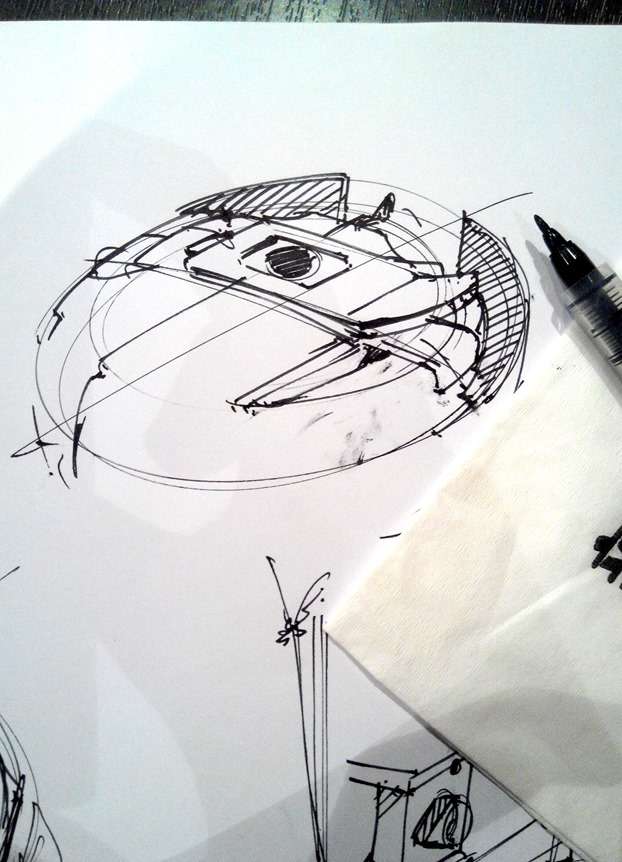
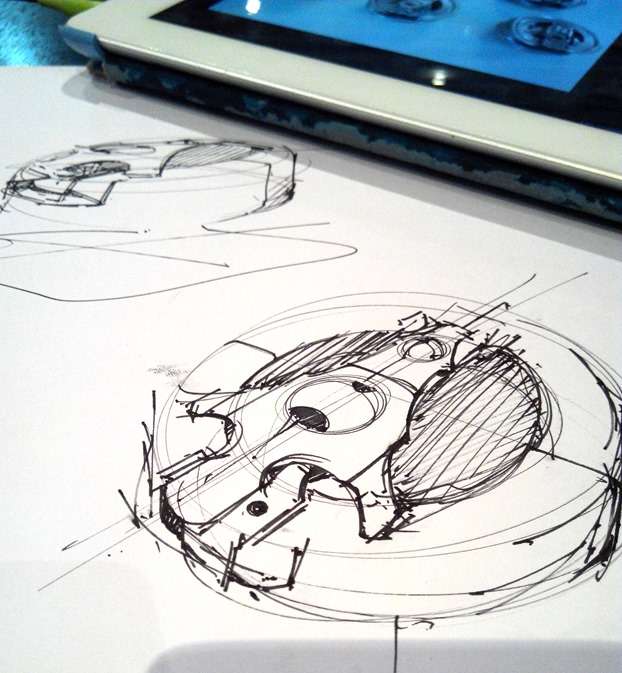
This new bobbin looks already like a spaceship.
Note that the bobbin is symmetrical.
That’s a major information you need to identify before sketching anything.
4. Visualize and Draw from Any Angles

I like this shape.
This “sewing foot” reminds me of a walking/jumping robotic foot.
It is great for concept art inspiration.
I love to train my 3D vision by drawing it from another angle.
TIP: In my head, I simplify the object with simple boxes like assembled LEGO.

5. Get Used to Complexity
Tonight, let’s explore the tough part of the machine!
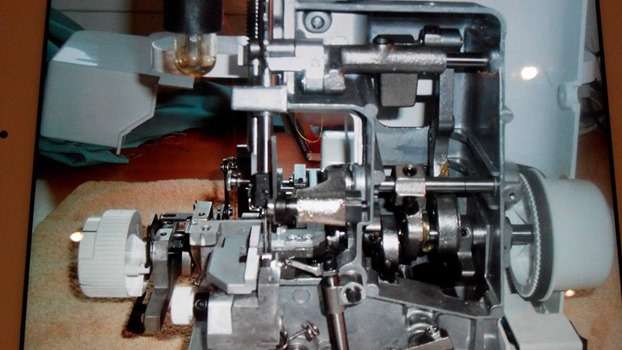
I have chosen this picture for its complexity.
I won’t draw everything as it is (I guess I would go crazy :)) but extract the shapes that interest me.
Actually, after a couple of hours of seeing it, it looks less complicated to me.
I guess my brain has already gotten familiar with certain shapes.
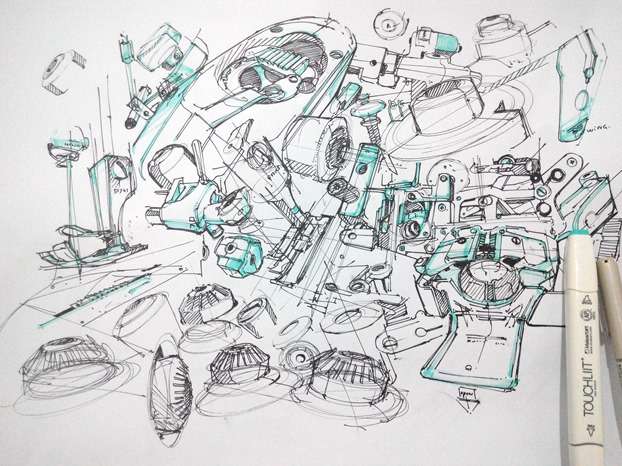
It’s a big mess. But it’s ok.
It’s a combination of doodles for me to train.
It took me about 3 hours. It’s definitely too long because I wanted to sketch as many shapes as possible.
Next time, I will draw with an even looser hand to sketch faster and explore more.
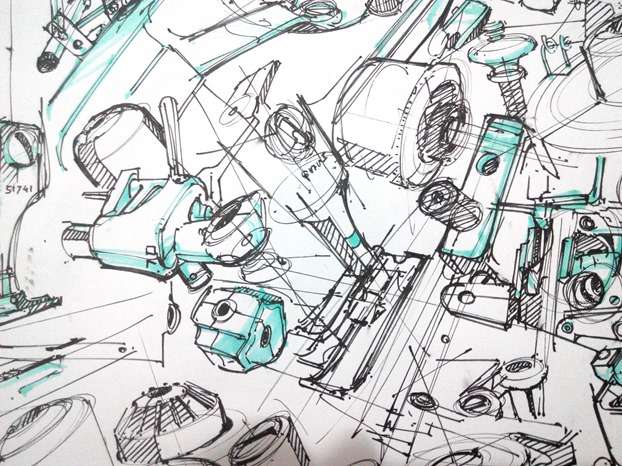
As soon as your brain has memorized the “logic” of a shape and mechanism, you should be able later to redraw it neater.
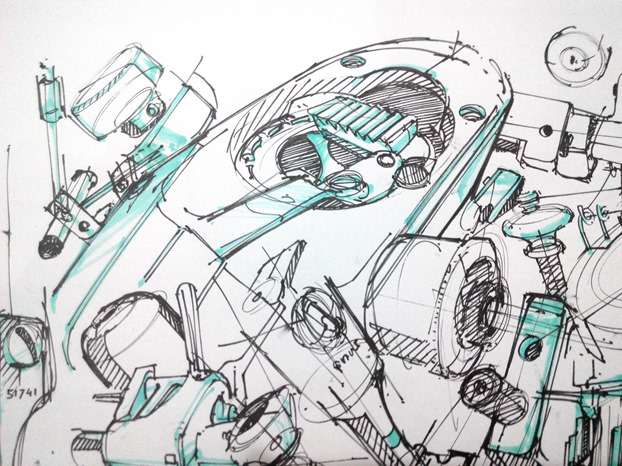
Have you noticed that most of the shapes use ellipses?
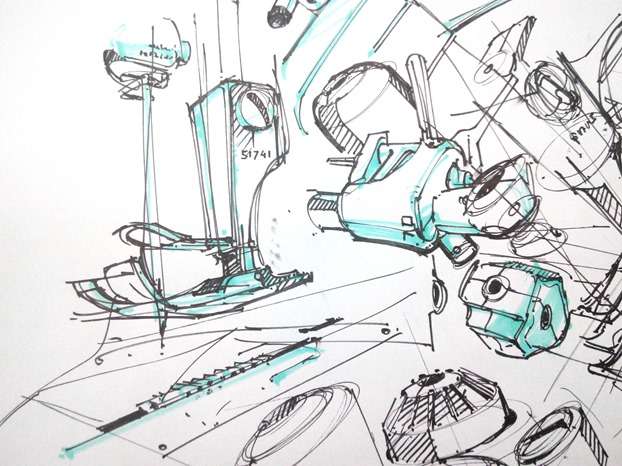
Because I draw metal pieces, I feel suitable to use a cold color marker.
6. Final Tips
- Keep practicing daily by sketching parts from references or imagination.
- Build a personal library of mechanical shapes and textures to use as design elements.
- Experiment with stylization but anchor your designs on real mechanical principles for believability.
By immersing yourself in the study of mechanical pieces, your concept art will gain authenticity, depth, and visual interest, making your engines and machines stand out with credibility and creative flair.
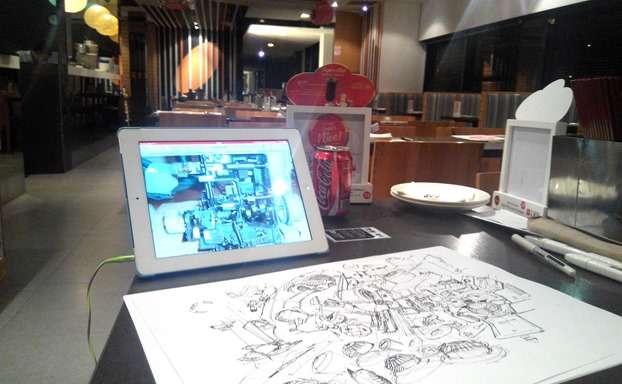
The cafe closed at 2am and I was the last client. Time to go home, write this article, and go to sleep !
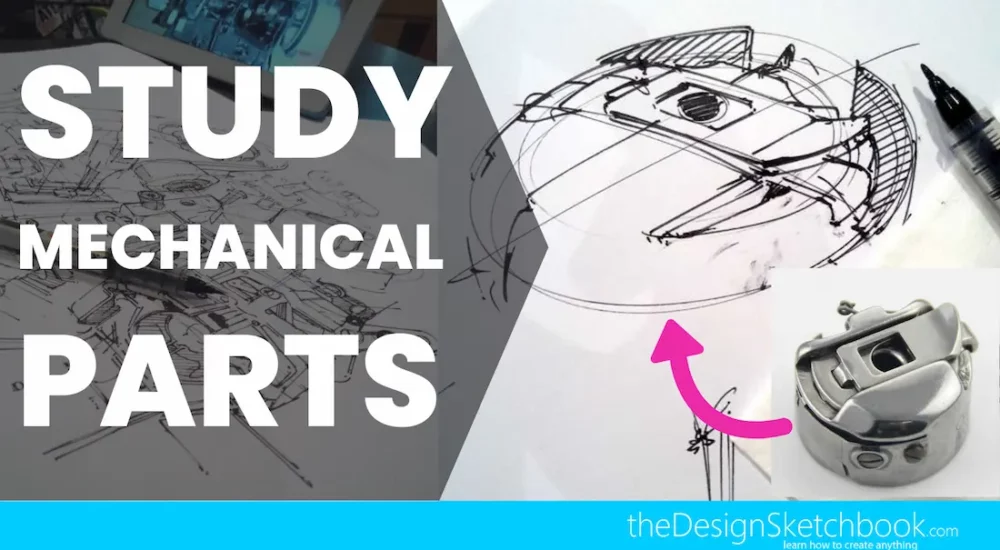
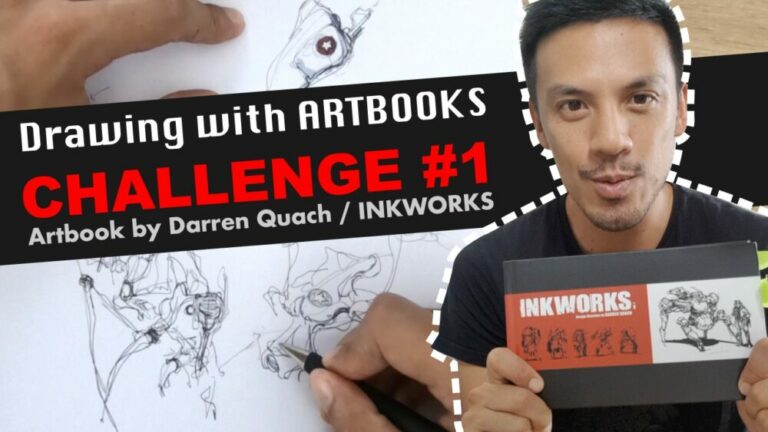
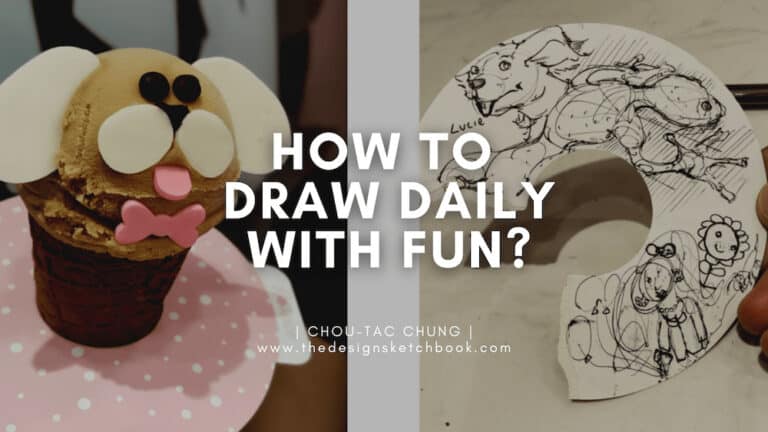


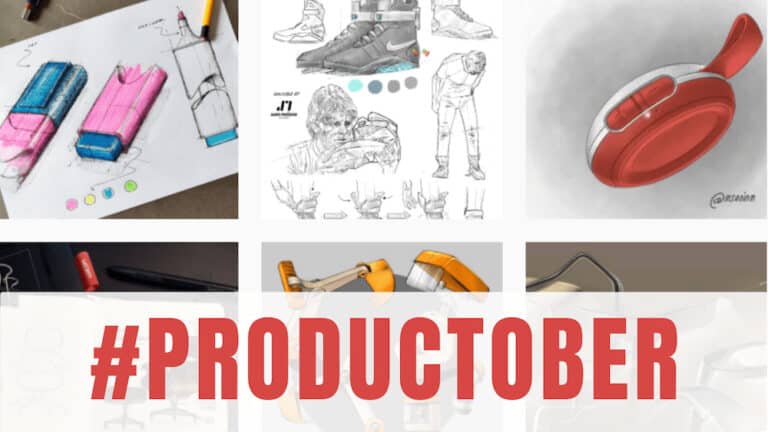



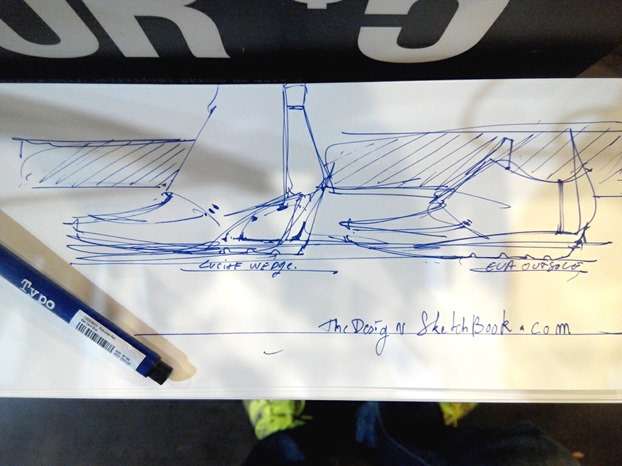




[…] reminds me some concept art and animation about cyborgs such as Gunnm.It is full of mechanic forms and wires from car engines, robots, maybe […]
sir how did you acquire knowledge on mechanical part do you have any book reference
Hello Hari,
You will need to go through the basics of perspective.
It is fundamental to start with this. 🙂
Mechanical parts are complex.
But you got to see them basically as the assembly of simple forms such as cylinder, boxes, rounding… It is good to decompose forms into simple ones.
I recommend you to start learning from these first.
With the Designer Starter Kit, and the Cube Mania Challenge.
(You can type in the blog search bar on the right)
For books, there is a good one for beginners: “Sketching the basics” from Koos Eissen.
Make sure to get the latest edition (The second).
For more advanced approach you have “How to draw” from Scott Robertson.
I do have a Product design sketching course in videos.
The registration is close for now. (I welcome new members 1 or 2 times a year only.)
You can register to the waiting list if you are interested: https://www.thedesignsketchbook.com/design-sketching-course/
Chou-Tac
great tip 🙂 I will do a personal study of machines as well to improve my mechanical knowledge, I never bothered for some reason or maybe I never noticed
There is machinery everywhere. Even outside try to observe all these intricate pipes, cables, train “wheels” and so on and take them in picture. You can bring these inspiration home. Or even better, you draw all these on the spot.